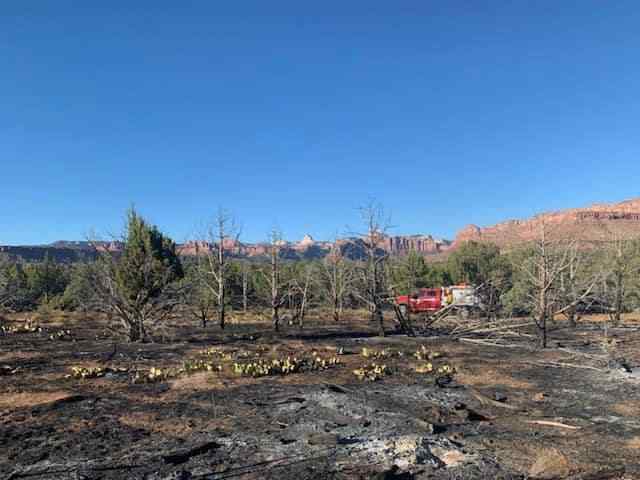Some information may be outdated.
A dangerous combination of low humidity, high temperatures and multiple years of dry vegetation and grasses along roadways is putting southern Utah at high risk of wild fire — and our region isn’t alone.
The National Interagency Fire Center has the entire nation at “Preparedness Level 5,” the highest level available to the warning system. Level five indicates that firefighting resources are already being stretched across the country, while the possibility for still more significant fire outbreask is high.
In Utah, there have already been over 703 wildfire blazes, as documented by the Utah Department of Natural Resources, and over half of those have been caused by humans.
Clark Maughan, wildland fire coordinator at Moab Valley Fire District, thinks he knows why.
“The above-average level of human-started fires this year may be because we have a lot of lighter fuels—highly combustible things like dried cheatgrass—so if someone is dragging their chains while towing something or walks away from a campfire for a moment, a spark hits that dry tinder and starts a fire very quickly,” Maughan said.


Roadside fires caused by tow chains are fairly common, Maughan said.
“With the number of motorists coming through Grand County, that happens every year,” he said. “People drive on and don’t even know they have started a fire.”
While there have been quite a few fires locally, staff and resources from the Moab Valley Fire Department are also being called into use across the state and nation.
“We’ve been very busy taking care of fires and supporting the greater good as far as helping out our neighbors,” said Maughan. “We’re on the fourth assignment this year with our engine crew out of the district.”
Moab’s engine crew has joined the fight against blazes in Oklahoma, Colorado, northern Utah and, most recently, on the Kolob Fire near Zion National Park. The department’s water tender truck has also been sent to support firefighting efforts this year.
Regional firefighting organizations have a deep history of collaboration and forming task forces to combat quickly spreading wildfires, as no single crew could tackle a fire alone.
“It’s an interagency approach to wildfires, from federal and state agencies down to local departments,” said Maughan. “It’s all for the same cause and everyone jumps in and contributes according to their skills: handcrews to engines to EMTs.”
Maughan remembered the 2021 Pack Creek Fire in the La Sal Mountains south of Moab, which was started by an abandoned campfire on June 9, 2021, and burned almost 9,000 acres and 10 structures before being subdued in early July.
“During the Pack Creek Fire, we really relied on outside resources,” said Maughan. “Of course, we always want to help out those in need like we were and pay that back.”
Maughan urges people locally to keep an eye out and use their “fire sense” to prevent local wildfires.
“It’s not too difficult to prevent fires: make sure you’re not dragging anything that can spark and, especially if you’re headed up to higher elevations, take some extra time and go out of your way to really make sure your campfire is out,” he said. “Conditions are extreme right now and the potential to accidentally start a fire is real.”
Appreciate the coverage? Help keep local news alive.
Chip in to support the Moab Sun News.




